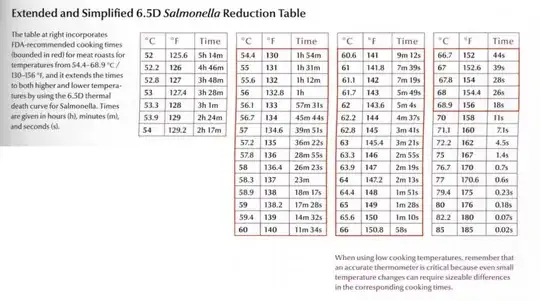Take for example a custard. I recall reading somewhere, probably on the internet, that heating it to 70C will kill all the bacteria in it for sure. I also recall reading that holding it for 5 minutes at 60C will do the same thing.
I’m having trouble finding a proper reference for this. Is what I said actually true? It must have been studied in food science, so is there a proper source for this?
